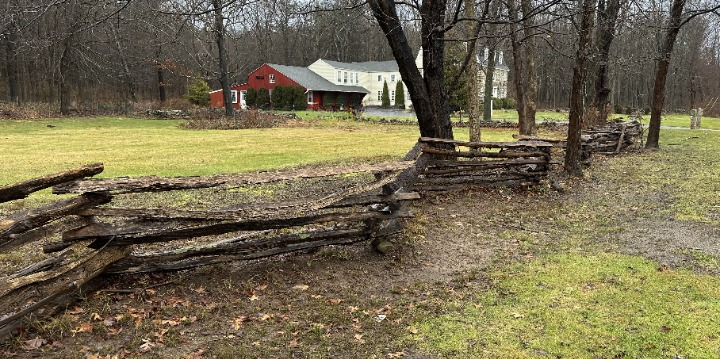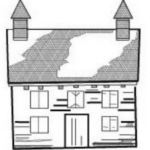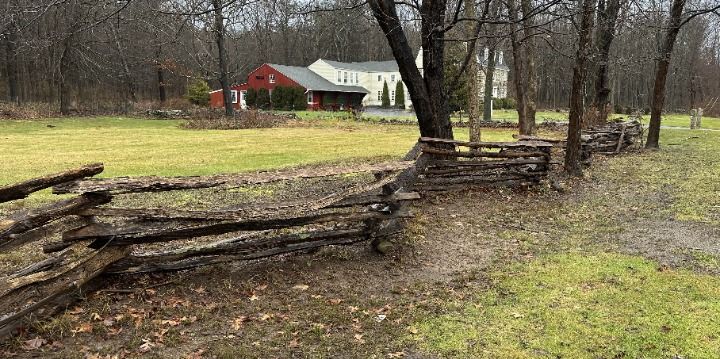When early colonists first settled the West Simsbury hills of Simsbury, the area was virgin forest. They had an ample supply of wood to build their houses, mills and other outbuildings; keep fireplaces burning for cooking and heating ,and fabricate fences.
In 1769 the Colony of Connecticut established laws regarding fencing.
“All common fields shall be sufficiently fenced and that all 5 rail fence, and stone wall 4 feet high, and being well, and substantially erected; and all other fence, either of rails, boards, hedge, ditch, brooks, rivers, creeks, etc., … shall be equivalent to the said 5 rail fence, … to fence against ruly [meaning unruly] horses, neat cattle, and sheep …” *

PHOTO: A split rail fence – also known as a worm, snake, or zigzag fence.
Split rail fences prevailed until about the time of the War of Independence, when they began to be replaced by stone walls.
“A man skilled in the use of an ax and a wedge could cut 150-200 10-foot rails in one day, and a man adept at erecting fences could lay 200 yards per day. A two-man team laying a stone wall could be expected to erect 10 feet per day.” *
By Tom Yanik
*Grigg, Bob. “Early Types of Fencing.” www.colebrookhistoricalsociety.org/Early%20Types%20of%20Fencing.htm, accessed 12/23/23.





